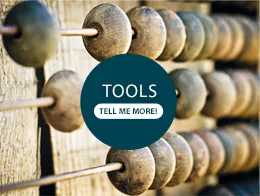Harvard MBA candidate Amrita Saigal (Class of 2014) and her co-founder, Oracle engineer Kristin Kagetsu, swept Harvard Business School’s top entrepreneurship contest yesterday (April 29), nabbing the grand prize and the Audience Choice award in the New Venture Competition’s social entrepreneurship category.
Their idea? Saathi – a social enterprise startup that provides low-cost sanitary napkins and jobs to women in rural India. The two, who both hold mechanical engineering degrees from MIT, wowed both the judges and the jam-packed audience at the Harvard event, drawing top marks – enough to push them ahead of a farm-to-market tomato paste producer in Nigeria, a school tuition program in Colombia, and an education consulting service. The two will use their $50,000 prize to move to India and open up shop.
We See Genius caught up with Saigal at HBS shortly after Saathi’s big win. She explains everything from the inspiration behind the idea to the HBS classes and professors that played a pivotal role in creating the business.
Open All Close AllI landed an internship my junior year as an undergraduate engineering student at MIT with Proctor & Gamble in the feminine hygiene division. I was 21 years old and did not realize that feminine hygiene meant Always and Tampax – I thought it meant Head & Shoulders and Pantene.
I showed up on the first day and was honestly shocked at what I found. I was a designer, and designing equipment that summer, I was confronted with the fact that women in rural India didn’t have access to pads. Girls were not going to school because of pads. So that was the inspiration. And I knew I could get people passionate about this idea I really cared about.
So I came back to MIT my senior year and convinced my senior design team that we should create a small-scale manufacturing process to make pads out of some type of locally available fiber. We looked at a number of fibers and partnered with a chemical engineering team at MIT who told us that the bark of a banana tree is the most absorbent fiber in the world and it’s readily available.
The interesting thing about banana trees, which I didn’t know, is that from the time you plant the tree to the time you get the bananas takes 9 to 12 months. But they only produce the bananas once, and then you have to cut down the main shoot every year. The farmers cut it up into little pieces and use some of it as fertilizer, but they just stack the majority of it in piles and piles, waiting for it to decompose.
We process the bark into fibers so it comes out as stringy pieces, which are dried and pulverized, and that provides filling for the pads. So it’s a nice fluffy material that we’ve all tried and the consumers are fine with it.
The idea came up way back in 2009, so we started this prior to HBS. I moved to India in early 2012 to get it up and running and ended up coming to HBS. Here, the Rock Center, the Social Enterprise Initiative, and the i-lab have been great resources, particularly the i-lab’s meet-and-greet events. The legal counseling, the early feedback sessions where you can submit your business idea, and the judging process really helped us through the competition. We’ve come a long way since we applied in March with an executive summary. The process has forced us to make sure we can hash out every detail. The judges pushed us to think beyond our initial scope and it’s been absolutely invaluable.
I took Business at the Base of the Pyramid with Kash Rangan, who’s one of the leaders of social enterprise. I loved the class, and he’s always been an inspiration to me for taking my ideas forward. Plus, seeing the business models across for-profit and nonprofit businesses really helped. Launching Tech Ventures with Tom Eisenmann and Entrepreneurial Finance with Ramana Nanda were key for getting the business going. They both forced me to think about funding and launching the business.
That we’ll be able to go to India and actually launch the business – we’ll be on the ground and able to work directly with the women. HBS is full of super ambitious, intelligent people with great ideas, and I’ve learned a lot from my classmates. Having their support and knowing they believe we can really make an impact means so much to us.
Other than winning this competition, the two most exciting things in my life were getting into MIT – I always wanted to be a mechanical engineer, and I never thought there was a chance – and honestly the same for HBS. You just never think you will. It’s like, “Am I the admissions mistake?” I would say getting into those two schools is equivalent to this.
By the end of this year we hope to be in five villages. The way our business model works is we partner with rural women self-help groups, which are groups of about 10 women that gather together to start their own microenterprises.
These women will purchase a machine from us for $500 and they’re able to repay that within three months. It’s not like a 10-year investment. Then they will manufacture their own pads and run their own businesses, managing their own books and accounts. You need two women to operate the machine and the other eight to sell these pads in their local communities using a door-to-door distribution model.
We’re targeting villages with a population of 10,000 people, which corresponds to roughly 2,700 women of menstruating age in that village. The idea is one village per machine. We want these women to start their own enterprises.
The main goal is to address the three A’s: affordability (using waste banana tree fiber); availability (doing local manufacturing); and the biggest one is awareness (using door-to-door distribution and word-of-mouth marketing).
The idea is that whatever village you’re in, whatever country you’re in, your local resources should be able to adapt to your needs – whether it’s coconut fiber or papyrus. This is not just about finding affordable pads but really trying to help these rural women feel empowered, to run their own enterprises and move up the socioeconomic ladder.
My grandmother grew up in a very rural village and missed school every month because it was taboo to go during this time. She says to this day it was something she was always upset about. To know that someone in my family went through this is ridiculous. If we can be the ones to solve this issue, it would mean the world to us.



